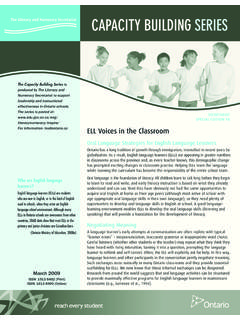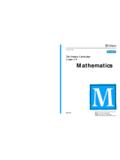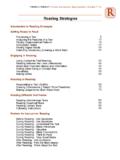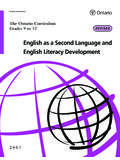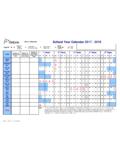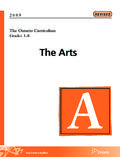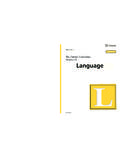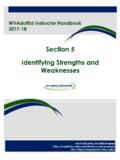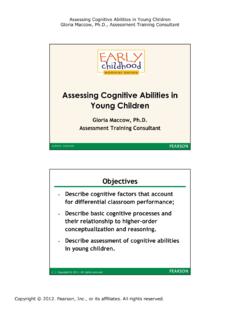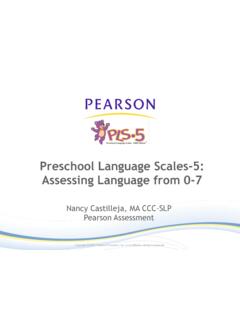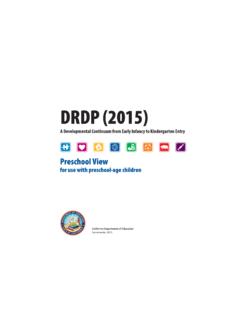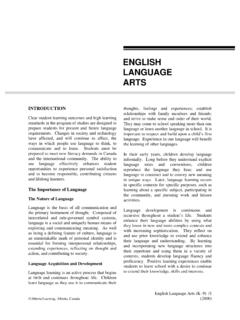Transcription of The Ontario Curriculum English
1 Ministry of Education The Ontario Curriculum English The Ontario Secondary School literacy Course (OSSLC), Grade 12. 2003. Contents Introduction .. 3. Purpose of the Course .. 3. Benefits of the Course for Students .. 6. Curriculum Expectations .. 6. Strands .. 6. Building Reading Skills .. 6. Building Writing Skills .. 7. Understanding and assessing Growth in literacy .. 7. Teaching Approaches .. 8. Building Confidence .. 8. Building on Oral Language Skills .. 8. Developing Reading Skills .. 9. Developing Writing Skills .. 9. Integrating Reading and Writing Skills .. 9. Assessment, Evaluation, and Reporting .. 10. General and Specific Principles Guiding the Assessment of Student Achievement in the OSSLC .. 10. Overview of Assessment in the OSSLC .. 10. The literacy Portfolio .. 10. Levels of Achievement in the OSSLC.
2 11. Reporting on Student Achievement .. 11. Evaluations During the Term: 70 Per Cent of the Student's Grade .. 12. Final Evaluation: 30 Per Cent of the Student's Grade .. 12. Accommodations for Students With Special Needs .. 13. The Achievement Chart for the OSSLC .. 15. Ontario Secondary School literacy Course, Grade 12 .. 19. This publication is available on the Ministry of Education's website at 3. Introduction The Ontario Secondary School literacy Course (OSSLC) is a full-credit Grade 12 course that will be offered as part of the English program in Ontario secondary schools starting in the 2003 2004 school year. This document is designed for use in conjunction with The Ontario Curriculum , Grades 9 and 10: English , 1999; The Ontario Curriculum , Grades 11 and 12: English , 2000; and The Ontario Curriculum , Grades 9 to 12: Program Planning and Assessment, The latter document contains information relevant to all secondary school courses and disciplines represented in the Curriculum ; however, the present document outlines aspects of assessment policy that are unique to the OSSLC.
3 Purpose of the Course To participate fully in the society and workplace of the twenty-first century, today's students will need to be able to use language skilfully and confidently. The Ontario Curriculum recog- nizes the central importance of reading and writing skills in learning across the Curriculum and in everyday life, and prepares students for the literacy demands they will face in their postsecondary endeavours. To ensure that they have the essential competencies in reading and writing that they will need to succeed at school, at work, and in daily life, students in Ontario must demonstrate those skills as a requirement for graduation. The standard method for assessing the literacy skills of students in Ontario for purposes of meeting the literacy requirement for graduation is the Ontario Secondary School literacy Test (OSSLT), implemented in the 2001 2002 school year.
4 The Ontario Secondary School literacy Course has been developed to provide students who have been unsuccessful on the test2 with intensive support in achieving the required reading and writing competencies, and with an alternative means of demonstrating their literacy skills. The reading and writing competencies required by the OSSLT form the instructional and assessment core of the course. (The comparison chart on pages 4 5 shows how the course incorporates and builds on the requirements of the test.) Students who successfully complete this course will have met the provincial literacy requirement for graduation, and will earn one The credit earned for successful completion of the OSSLC may be used to meet either the Grade 12 English compulsory credit requirement or the Group 1 additional compulsory credit requirement (see Ontario Secondary Schools, Grades 9 to 12: Program and Diploma Requirements, 1999, pp.)
5 8 9). 1. All Curriculum documents are available both in print and on the ministry's website, at 2. Students who have been eligible to write the OSSLT at least twice and who have been unsuccessful at least once are eligible to take the course. If they are successful on the test, they are not eligible to take the OSSLC (except under special circumstances, at the principal's discretion). 3. The OSSLC may be offered as a full-credit course or as two half-credit courses. (For policy guidelines on half-credit courses, see The Ontario Curriculum , Grades 11 and 12: English , 2000, p. 5.) If delivered as two half-credit courses, each half-course must incorporate expectations from all three strands in the same proportions as in the full-credit course. To meet the literacy requirement for graduation, students must successfully complete both half-credit courses.
6 4 THE Ontario Curriculum : English THE OSSLC, GRADE 12. Comparison of the Requirements of the OSSLT and the OSSLC. Also required How OSSLT requirements are reflected in Requirements of the OSSLT* in the OSSLC the requirements of the OSSLC. READING. Types of texts read The OSSLT requires students to read twelve assigned Students read many self-selected and selections of varying lengths and degrees of challenge teacher-assigned informational, narrative, on a range of topics. and graphic texts of varying lengths and The reading selections include: degrees of challenge on a range of topics, including topics relevant to the students'. informational texts . interests and postsecondary destinations. narrative texts . graphic texts . The emphasis in the test is on informational texts.. Reading skills demonstrated Students answer questions designed to measure their Students demonstrate their understanding skills in understanding and interpreting the texts they of texts and their skills in the three key have read.
7 They must demonstrate skills in three areas in various ways for example, key areas: through written and oral answers to ques- understanding directly stated ideas and information tions, through discussions and teacher- student conferences, and through written understanding indirectly stated ideas and information . responses to texts. making connections between personal knowledge and . experiences and the ideas and information in texts Reading strategies used Students are expected to apply the following reading Students learn and demonstrate the ability strategies to understand texts: to select and apply a range of reading using knowledge of structure and organizational strategies: elements of texts to understand their meaning, purpose, before reading, to preview texts and build and intended audience on prior knowledge using visual features of texts to understand their during reading, to monitor comprehen- meaning and purpose sion and record ideas using knowledge and context to understand unfamiliar after reading, to consolidate and extend and technical vocabulary and language used figuratively understanding using grammatical structures and punctuation to.
8 Understand meaning INTRODUCTION 5. Also required How OSSLT requirements are reflected in Requirements of the OSSLT* in the OSSLC the requirements of the OSSLC. WRITING. Writing forms used The OSSLT requires students to produce four pieces of Students are required to produce several writing, one in each of the following forms: pieces of writing, on self-selected and a summary teacher-assigned topics, in each of the four forms. They are also asked to write in other an information paragraph . forms relevant to their personal interests an opinion piece ( a series of paragraphs expressing and future destinations. an opinion ). a news report . Writing skills demonstrated The writing tasks are designed to measure students' skills Students are required to demonstrate in in communicating ideas and information clearly.
9 Students their writing all of the key skills measured must demonstrate their skills in the following key areas: on the test. They also learn and are developing a main idea expected to demonstrate their use of the writing process (pre-writing, organizing, providing supporting details . drafting, revising, editing), which provides organizing and linking ideas and information a necessary framework for their writing. using an appropriate tone for the specified purpose . and audience using correct grammar and punctuation . using correct spelling . CONDITIONS. Students demonstrate literacy skills within the time limits of Students demonstrate literacy skills by the test. completing a variety of tasks and assign- ments throughout the term and in a final evaluation (see pp. 12 13 of this document). Time is allowed for students to use reading strategies and the writing process.
10 *Adapted from the EQAO website, at 6 THE Ontario Curriculum : English THE OSSLC, GRADE 12. Benefits of the Course for Students Students with widely ranging levels of literacy skills will require this course. Some of these students may have significant gaps in their literacy knowledge and skills. In order to demystify . the processes of reading and writing for such students, the course focuses on the strategies that competent readers and writers use to understand texts and to write for various purposes. Students taking the course will be given opportunities to improve their knowledge of these strategies and to practise using them in order to strengthen their literacy skills. Poorly developed literacy skills may affect students' ability to meet Curriculum expectations in other subject areas besides English .
